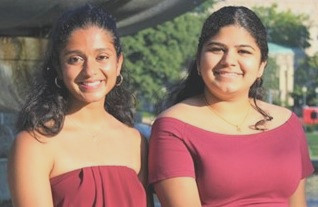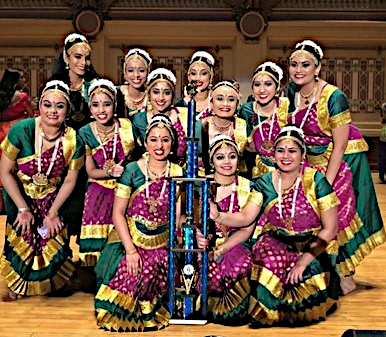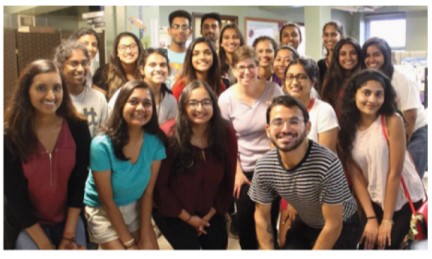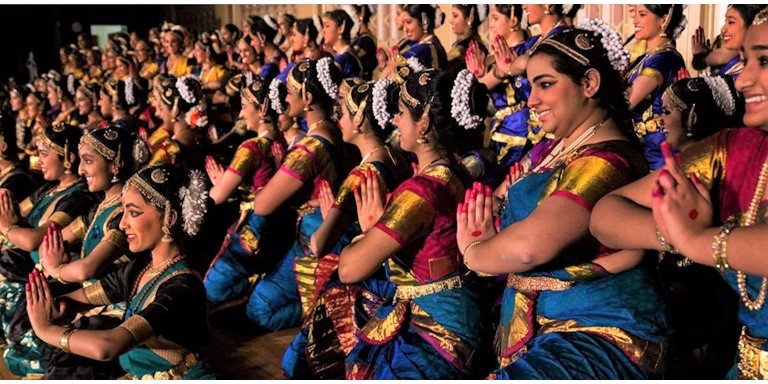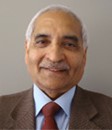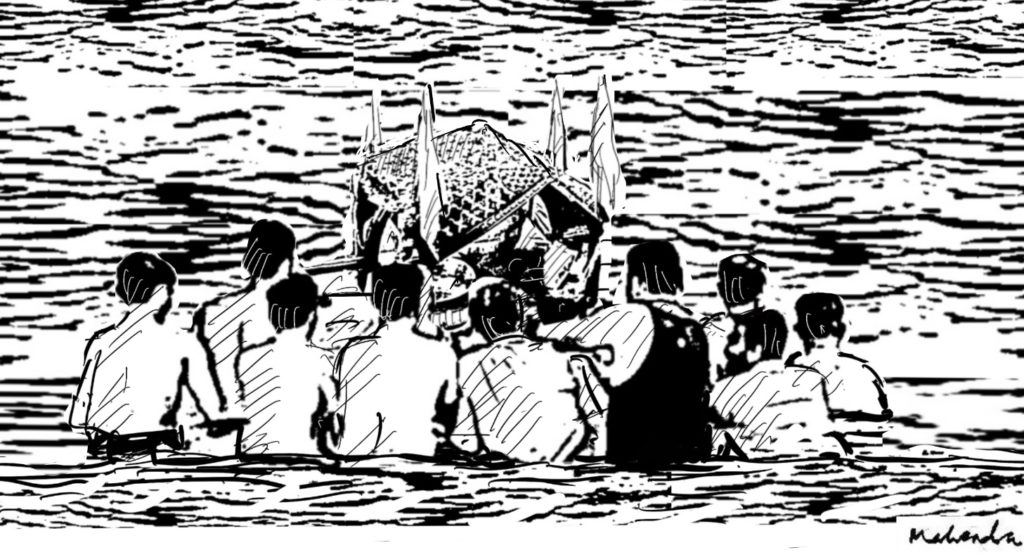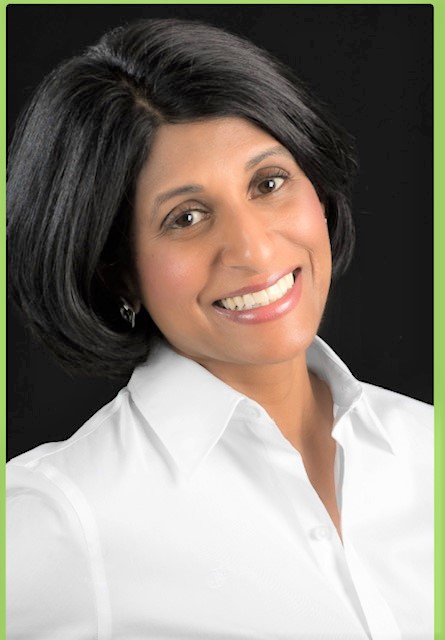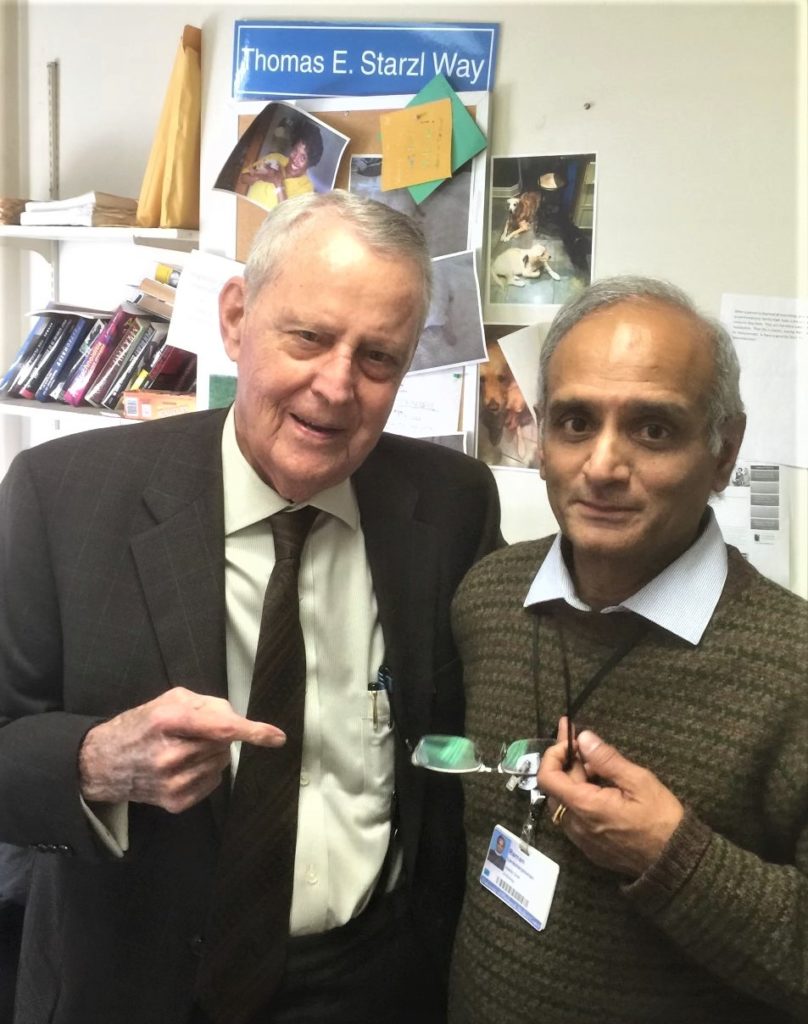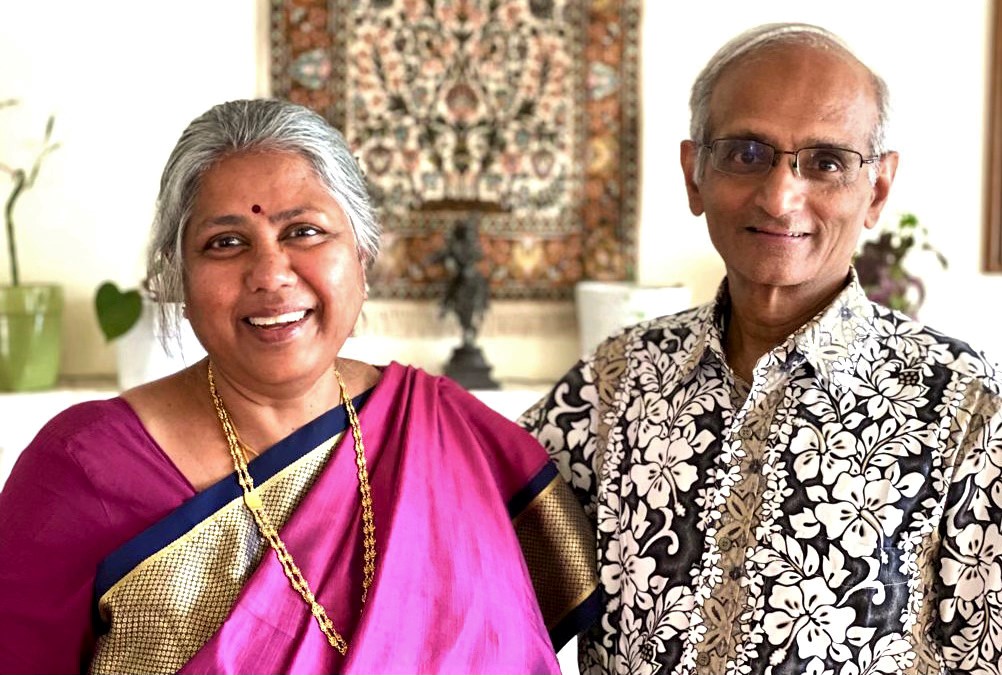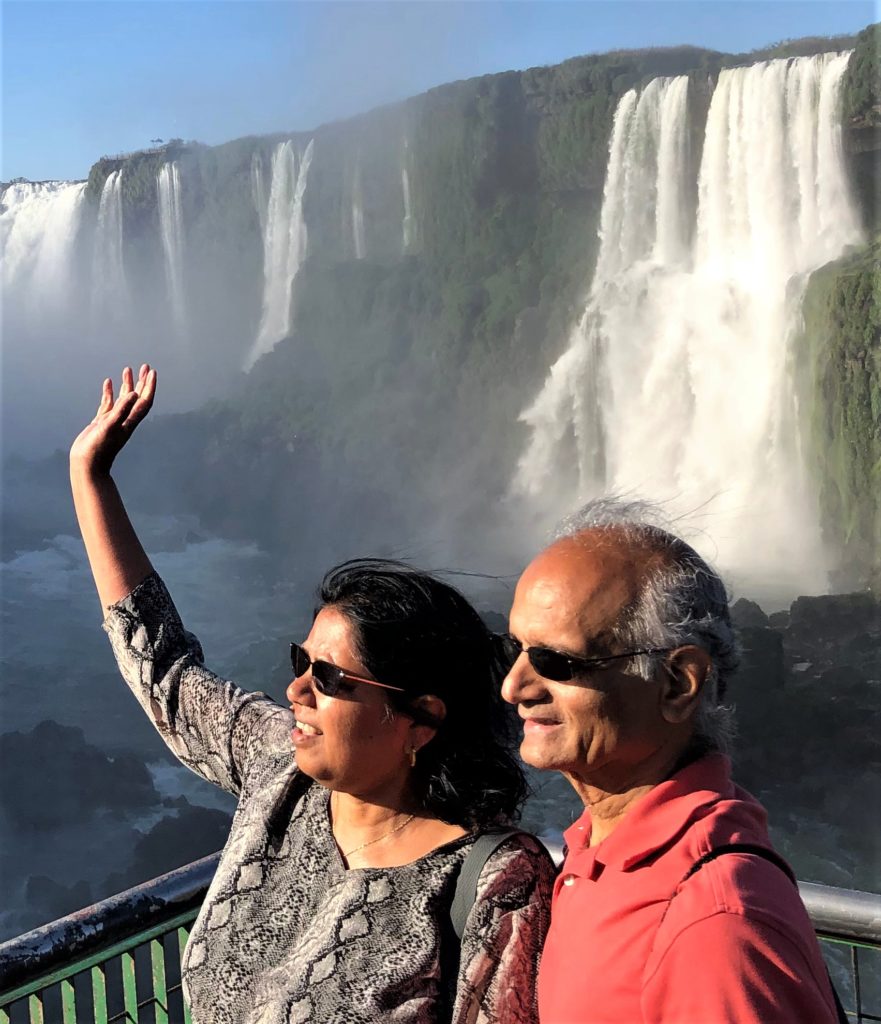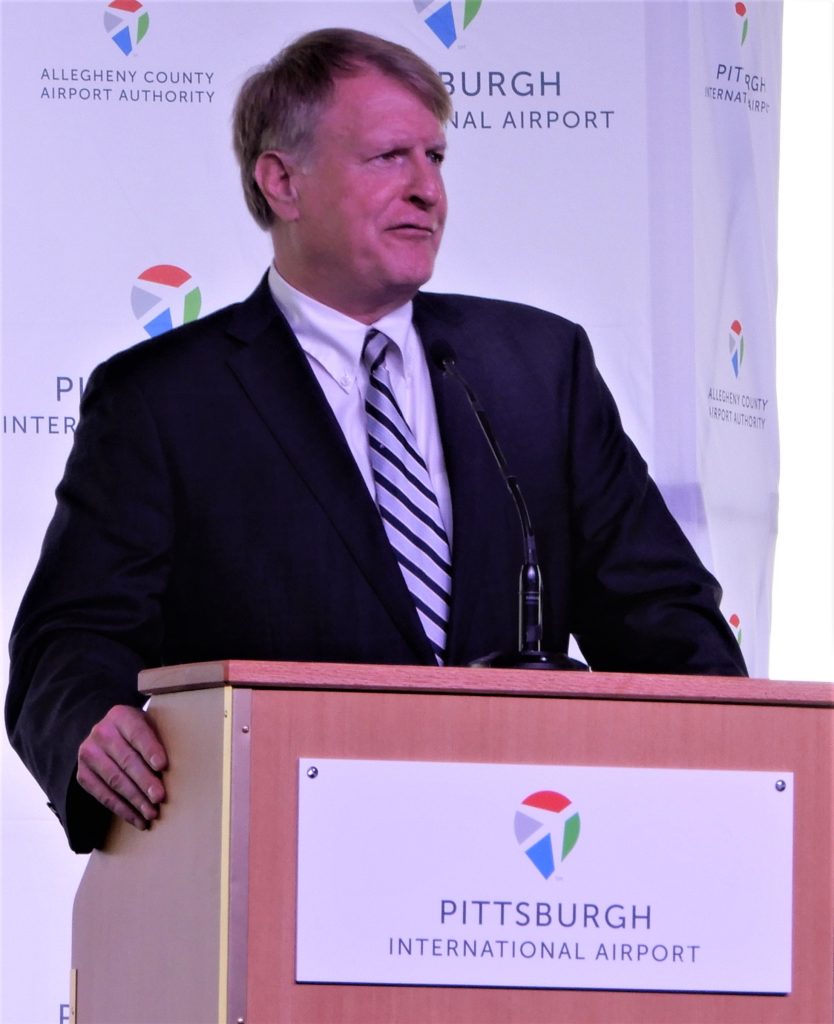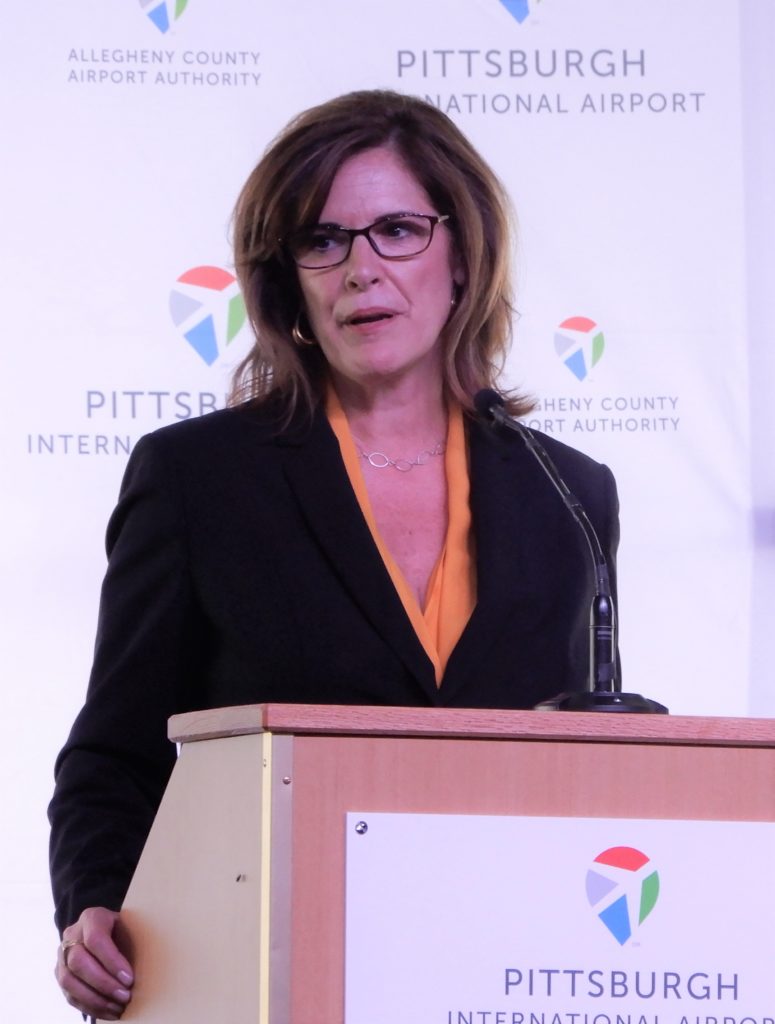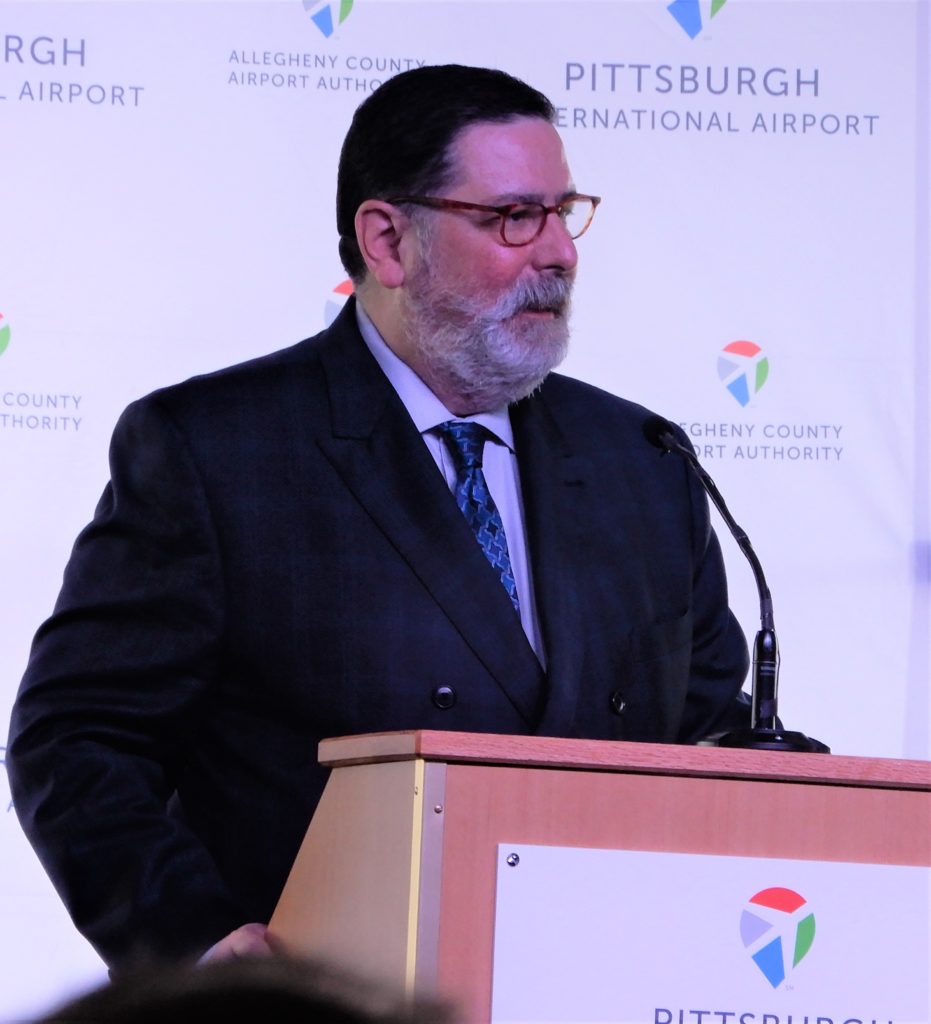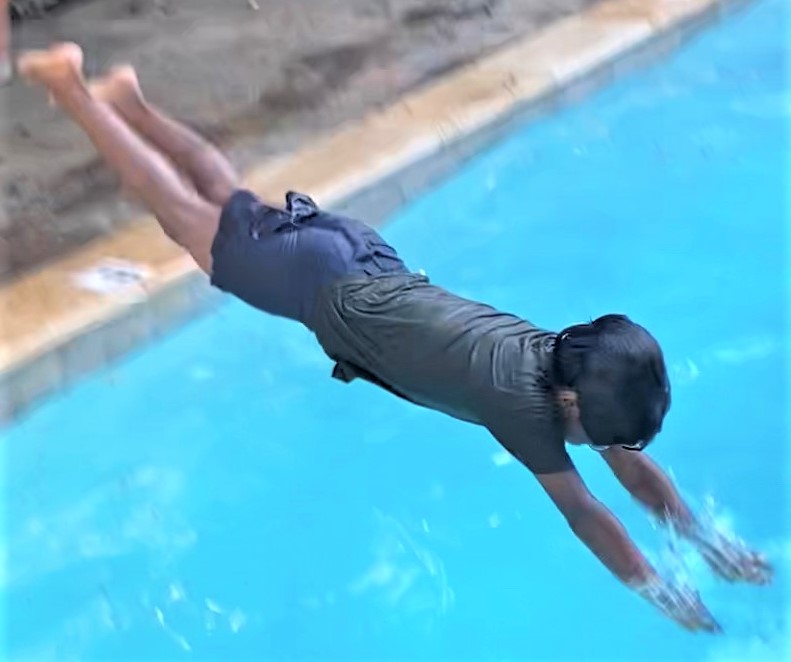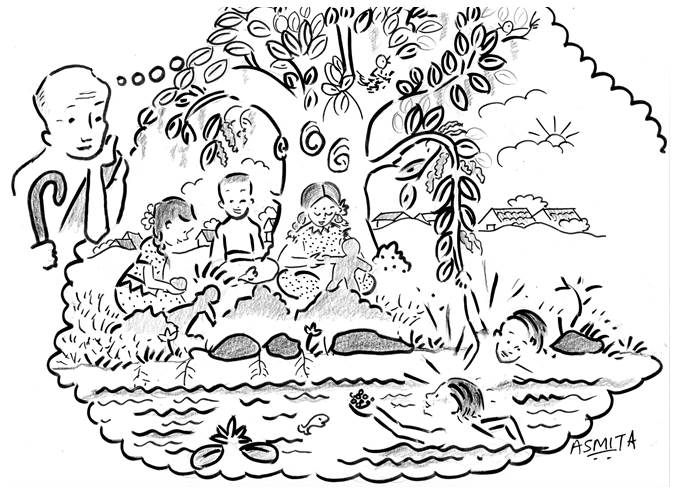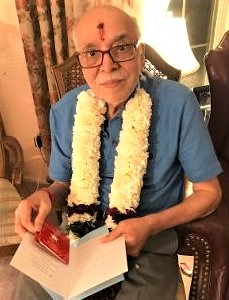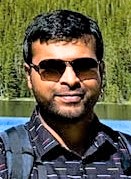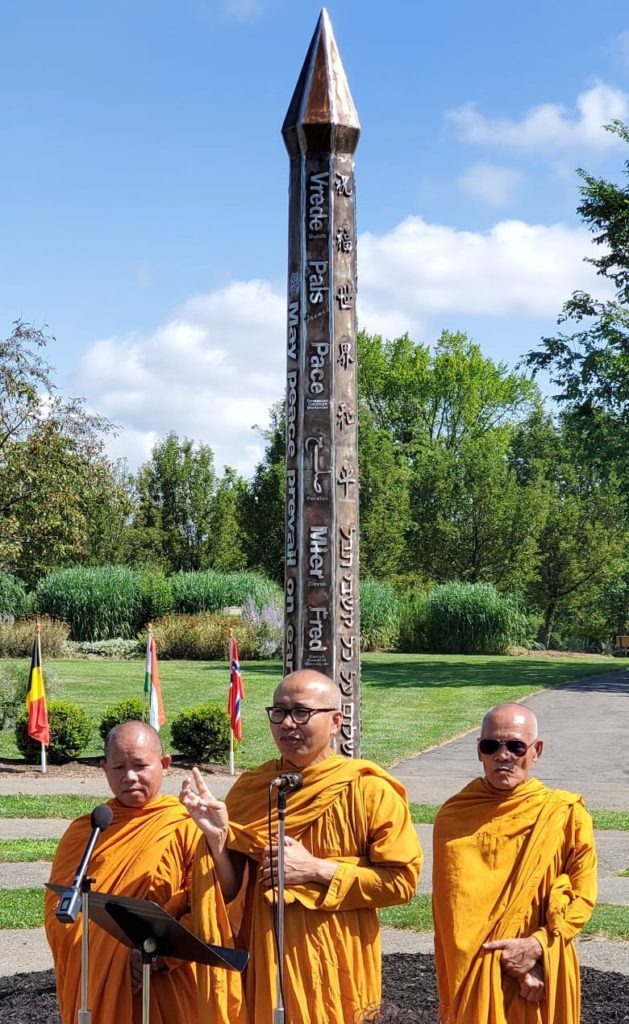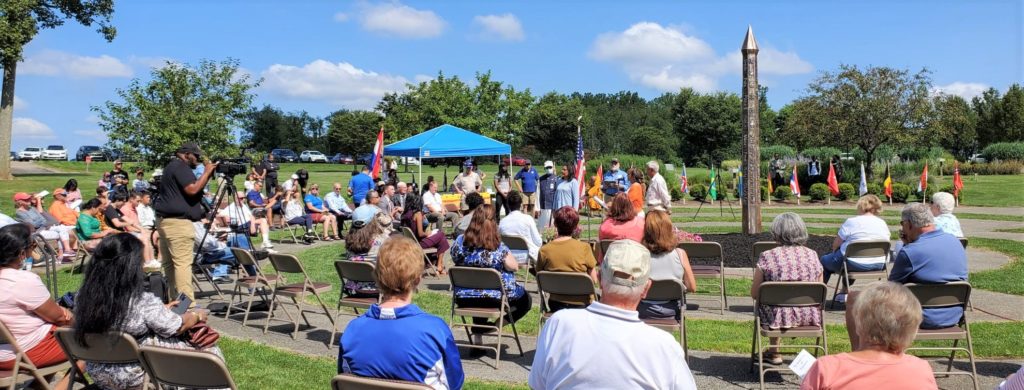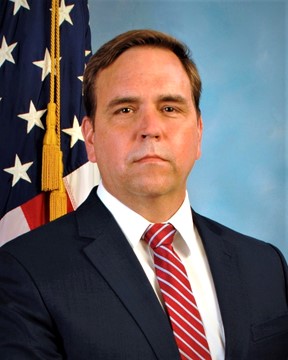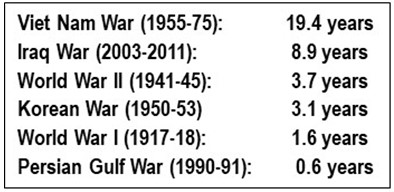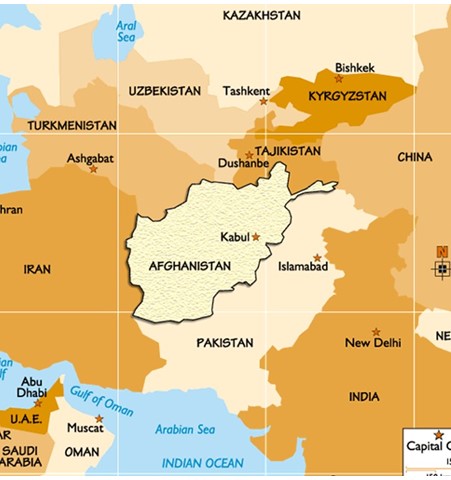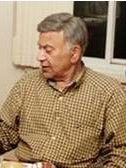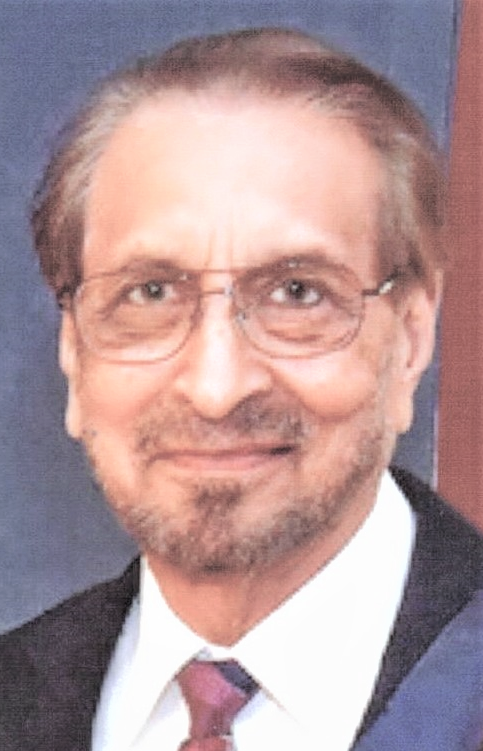Archive for category Past issues
Provoking Russian Invasion of Ukraine
Posted by admin in April 2022, Past issues on April 12, 2022
Henry Kissinger, in his Washington Post article (March 5, 2014) titled To Settle the Ukraine Crisis, Start at the End, didactically traced Ukraine’s convoluted political, cultural and religious history, and why Russia — not just Vladimir Putin — is obsessed with Ukraine. Kissinger’s advice was unambiguous: Ukraine “should not join NATO” while it “should have the right to choose freely its economic and political associations, including with Europe.” Kissinger is not alone on this. Among many other experts, George F. Kennan was the architect of American post-World War II strategy for containing the Soviet Union. In the late 1990s after the USSR imploded, Kennan called the expansion of NATO into Central Europe “the most fateful error of American policy in the entire post-Cold War era.” But US foreign policy machine and bipartisan Congressional leaders in the Obama, Trump, and Biden presidencies have been heedless.
President Biden, so soon after ending the longest (20 years) and the costliest ($2 trillion) American war in Afghanistan, knows that Americans are not ready for another military adventure thousands of miles away in Russia. Further, the US military and foreign policy advisors to Biden recognize that Russia is no Afghanistan or Iraq. And EU nations are not ready to spill their blood and draining their treasury in a military confrontation with Russia over Ukraine. Besides, 40% of EU’s natural gas comes from Russia, with which EU is historically interlinked in complex ways.
No wonder, other than sanctions — including sanctions on individuals in Russia — there is nothing the US can do for now. So, Russia is militarily overpowering Ukraine and prolonging the conflict. No matter how this ends, we are in for a long Cold War II.
Media in the US talk in moral tones about Russia’s military ambition and penchant for interfering in US domestic politics. But then, since WW-II, the US has deposed democratically elected leaders, propped up despots, and made the USSR implode, not to speak of countless asymmetric wars, big and small, in many parts of the world killing and maiming civilians in the thousands and destroying their physical infrastructure.
Russia is not, by any stretch of the imagination, an economic or technological threat to the US. Militarily, maybe. And yet, after dismantling the USSR, the US added fifteen new members to NATO, all encircling Russia, Wanting to admit Ukraine into NATO only provoked Russia. The American focus should be on China, a more menacing threat economically, politically, militarily, even culturally, and with deep pockets. ∎
Retirement Communities and Senior Centers for Indian Immigrants to the USA
Posted by admin in January 2015 on February 6, 2022
Balwant N. Dixit PhD Phone: (412) 963-8023
(I respectfully dedicate this paper to the Late Dr. Ashok Sapre of Murrieta, California for his pioneering efforts in promoting ideas to help Indian immigrant seniors to the North America. His numerous contributions have led the path for all of us to follow. Dr. Sapre passed away on September 14, 2021)
Note: The most of the information mentioned in this article about the Indian Retirement Communities and senior centers is obtained from respective websites. Most often website information is given for promotional purposes and emphasizes most desirable aspects. The graphics are also not realistic since they are most often generated from computer graphics. It is very difficult to get the real information except when a person visits an establishment and spends time and gathers information from the residents and managers. Such visits are rare. One example is a brief report made by the late Dr. Ashok Sapre on ShantiNiketan.
Indian immigration to the USA: I arrived in the USA from India in 1962 on a one year International Fellowship in Pharmacology. At that time there were only about 4000 persons of Indian origin in the USA. Although Indian immigrants entered the USA as early as1920 significant immigration is of very recent origin because of the legislative barriers due to the laws such as the 1917 Immigration Act preventing any immigration from India. As of 2019 there were about 2.7 million Indian immigrants in the USA. This increase was principally due to the passage by US Congress of the 1965 Immigration & Nationality Act removing national-origin quotas and basing immigration on having the economically desirable skills. This was the reason that from 1980 to 2019 the Indian immigrant population in the USA increased almost 13 fold, reflecting in the fact that most of the current Indian Immigrants (about 2,500,000) are comparatively a young ranging 35 to 70 yrs. in age. Then there is a significant income disparity between the early immigrants and the later arrivals. However, no reliable quantitative data are available. This highly skewed population in age and in income has important consequences as related to retirement readiness. In the USA population of 330 million, about 54 million are over 65 and retired (16.3%) and verifiable data on what USA Senior citizens want as far as their retirement is concerned are easily available, while in the Indian 65+ seniors estimated at about 200,000 (7.4%) it is very difficult to ascertain what Indian seniors want, since verifiable data are unavailable.
The Retirement Communities in the USA.
There are an estimated 80,000 Retirement Communities of various types, operated by organizations (for profit, non-profit, religious, self-managed etc.) serving 25 + million USA senior citizens, mostly complying with the Federal Fair Housing Act of 1968. As far as I know, several hundred Indian immigrants have moved into the age based American Independent retirement communities such as the Sun City Center in Florida, Age based Independent retirement Community in Marietta, California, Traditions of America near Pittsburgh, Pennsylvania and in a few other states.
Earlier efforts made to build “For Indians Only” Retirement Community in the USA.
In 2007, a workshop by the National Indo-American Association for Senior Citizens (NIAASC) was organized in New York and the following items were discussed. Where to spend golden years” for those who immigrated to USA in early 60s. Since the Joint family system was no longer a viable option for those in the USA and it may not be feasible for most NRIs to move back to India OR to stay with their children in the USA, a plan was announced to develop a retirement community near Atlantic City, (NJ), for the seniors of Indian origin, slated to open in 2008. For various reasons the venue was changed to Florida. A suitable site was selected in the Taveres County near Orlando and plans were finalized to construct a facility called ShantiNiketan. The ground breaking ceremony took place on June 17, 2009 at the hands of Iggy Ignatius, the originator & CEO.
Current, age based (55+ or 60+), independent Retirement Communities for Indian Immigrants, in the USA.
(i) Ownership:
| Name of the Community, type of housing & Contact details | Location (State) | Type of the facility | Amenities | Present status and remarks |
| ShantiNiketan (Houses, Condos and townhouses). Contact: (352) 508.7060 | Florida | Age based Independent living. No provision for long term care. Nursing care facility under consideration | Dining Hall/Theater. Daily chef prepared three vegetarian meals. Each residential unit with its own kitchen. Prayer room, Library/Computer room, club house with a gym | Development in several phases. Over 150 units sold out. Some of the houses/condos owned by seasonal occupants |
| Serenity Reserve (85 Houses). Contact: (407) 212-0123 (JAGK7518@GMAIL.COM) | Florida | Age based Independent living. No provision for long term care. | Club house, pool, central kitchen, banquet hall, outdoor lounge, fitness center, yoga and meditation room, library, movie theater | Sold out. Opportunities for resale exist |
| Anand Vihar (Houses & Townhouses (Costs from $179,000 to $329,000) | Florida | Age based Independent living. No provision for long term care. | A recreation center, a swimming pool. A dining hall with flexible meal options, a fitness center, a movie/media room, tennis and pickle ball courts, a prayer & meditation room and a gazebo for relaxing | Sold out. Some of the houses/condos owned by seasonal occupants. Opportunities for resale exist |
| Nalanda Estates (83 homes. Cost: $305,990 to $525,990. Contact: | Florida | Age based Independent living. No provision for long term care. | Club house, banquet hall, Commercial kitchen, fitness center, prayer room, walking trails, theater, zen garden | Sold out. Opportunities for resale exist |
| Verandah (51 Townhomes, 75 Condos and several houses, Handicapped accessible (Costs from $390,000, with monthly charges, $4,637-$6,028. Contact: (312) 952-1802. (verandahretirementcommunity@gmail.com) | Illinois (Chicago) | A CCRC with a 100 bed hospital on the campus | Dining room, library, Beauty salon, Restaurant-style dining. Indian and American Lifestyles | Sold out |
(ii) Rental Apartments
Priya Living: Various locations in California with completely furnished rental apartments for senior citizens, with unique shared spaces and Innovative programming. Contact: 408 – 310 – 5112. (namaste@priyaliving.com). Monthly rent: $2,395-$3,100
| Name of the Community | Location | Type of the facility | Amenities |
| CITY CENTER. | Fremont, CA.94538. | Independent living. No provision for long term care | Outdoor recreation spaces, an indoor community kitchen, a pool and cabana. Open Courtyard All amenities not available at every campus. |
| WARM SPRINGS | Fremont, CA. Located in the Bay Area | ||
| CIVIC CENTER | Santa Clara, CA. Silicon valley |
Retirement Communities in the planning stages
| Name of the Community & type of housing | Location | Type of the facility | Amenities | Present status and remarks |
| Athashri (Contact: Inquiry@dahlingroup.com). Costs: $460,000 – $740,000 | Hayward, CA. | Independent living, with 150+ condominiums + three single family homes (1-3 BR) | A kitchen + living space of 700-1800 sq. ft. Swimming pool, wellness center | Original developers: Pristine Homes, CA + Paranjape Schemes, Pune, India. Future plans uncertain due to problems with financing |
| Vishram Kuteer An active 55+adult community with houses. Prices: $123,000 – $215,000. Contact: (281) 337-5133 | Rosenberg TX | Independent living | Located on 23 Acres with two lakes, a recreation facility, a common vegetable garden, a meditation area, and a small Hindu Temple | Uncertain future |
| Apna Ghar. 7228 Blanco Drive, Irving, Texas 75039. Contact: +1 (817) 891-7770 | Texas (Dallas) | Independent living community | Yoga classes, Health seminars, Movie Theater next door, Relaxing room with playing cards, domino, Carrom Game, Large outdoor Patio with pool and Waterfall. Three vegetarian meals, | Proposed |
| Anand Vihar. Contact: Anand Patel, Pangea Realty Group, 1211 Tech Blvd. #150, Tampa, FL 33619 | Georgia (Atlanta) | A high-rise luxury condo community for Indian seniors with a potential for an assisted living facility | A covered parking garage, indoor and outdoor pools, meeting spaces and a dining hall. | Proposed |
Nursing Care Facilities for Indian Immigrants
The “Indian Nursing Home” Program started by Dr. Mukund Thakar, a pioneer in providing nursing care services to Indian Seniors living in the USA located in (i) Kings Harbor Multicare Center (NY) (ii) Arista Care Centers (NJ) and at (iii) Smaller facilities at several other locations.
Care is provided by Indian doctors, Indian nurses and Indian therapists speaking Hindi, Punjabi and Gujarathi, with Indian vegetarian food, Indian Prayer service, a Hindu temple, Traditional Indian festivals, Indian television shows and Indian music.
The following statement by Dr. Mukund Thakar is worth mentioning here and I hope some Maharashtrian physicians and health care workers follow Dr. Thakar’s steps. “Taking care of the elderly has been my passion since I began my career as a medical professional and now I have the honor of catering to their needs 24 hours a day. I had a vision of establishing an Indian nursing home program to accommodate the Indian elderly. The Indian nursing home program was developed in 2005 by creating an environment where the Indian elderly would feel comfortable in their living arrangement and where their medical and personal needs are met to ensure their well-being and happiness.
My staff and I have been providing exceptional quality care to our Indian senior citizens from all over the country. The accurate formula of medical care enriched with the Indian culture has revolutionized the way our senior citizens are cared for in nursing homes. With multiple programs operating successfully in New Jersey and New York, I would personally like to invite you to take a tour of this unique program that brings comfort, culture, and care together under one roof.” Contact: (https://myindiannursinghome.com/)
Some observations, some questions and some freewheeling thoughts
(1) “For Indians only” retirement communities currently provide housing for around 1500 seniors out of an estimated 150,000 to 20,000 Indian seniors in the USA
(2) Almost all “For Indians” retirement communities have no provision for much needed assisted living /nursing care. Exception being Veranda in Chicago and a stand-alone Mukund Thakkar’s Arista care in NJ and New York
(3) Currently relatively very few “For Indian only” retirement communities are functional in the USA. What are the reasons? Is it the lack of interest or the lack of demand or the lack of capital or the lack of reliable market research?
(4) Why so few Indian Immigrants want to move into a retirement community for Indians?
(5) What factors determine where Indian seniors want to retire?
(6) Many Indian seniors prefer to move near their siblings, but not with them. Why?
(7) No reliable data to indicate the thinking of Indian seniors as what they want
(8) No representative business organization that can provide reliable data on Indian Seniors on retirement issues is present as it is there for the American Retirement Communities
(9) Let Indian seniors join a senior care community (such as a CCRC) that can provide all the necessary care from A to Z. Needs lot of financial recourses. There are 2000 such communities in the USA
(10) Go by yourself and take care of yourselves the best way you can with whatever resources you can muster and with whatever help you can get.
(11) Let us negotiate with our grown up children in what way we can help them in advancing their life objectives such as the education of their children (e. g. by contribution to the 529 college savings plans), improving their house etc. and in return request them to accommodate us and our limited needs. This is already happening on a ver limited scale. It may be necessary to modify their existing house. Reestablish JOINT FAMILY structure with a modern twist!
(12) Let the seniors join any age defined Independent American Retirement Community, and sign up for a Continuing Care at Home Program (CCHP) or call any of the Home Care agencies, such as Home Instead, to receive the care one needs at home.
(13) Almost every city in the USA has several Indian Restaurant. Arrange a “Meals on Wheel” type of meal delivery program (e.g. 5 days/week) to seniors by subscription.
Senior Citizen Centers
A Senior Citizen Center (SCC) is a relatively recent origin in the USA and it is in the very early stages as far as Indian Seniors in the USA are concerned. SCC is a type of community center where older adults can congregate to fulfill many of their social, physical, emotional, and intellectual needs. In the USA, many towns have senior centers that are usually locally funded, though some may receive state and federal money. An estimated 11,000 such centers serving about 1 million seniors are functional in the USA. Usual activities at a typical Senior Center: Health & Wellness Programs, Personal growth and learning, Computer classes, Woodworking and other hobbies such as Knitting, Painting, Photography, Ceramics etc., Driver’s safety program, Nutrition & Culinary classes, Advice on retirement investments & financial planning and income taxes
Senior Citizen Centers for Indians in the USA: Relatively few, mostly located in large cities such as the New York City, Chicago, Los Angeles, San Francisco etc. “India Home” is one such Senior Centers, opened in 2014 serving the (60+) South Asian Seniors in the New York City. It serves the South Asians-one of the fastest growing and most overlooked groups of elderly in New York City.
In the Pittsburgh area currently there are two Indian Senior Centers that are very effectively providing very valuable services to the India seniors.
(1) United Seniors Association of Pittsburgh (USAP) is a service organization of senior citizens. Currently it does not have its own facility but functions very effectively as a virtual senior center. It was founded in 2017 by the seniors and for the seniors. USAP is registered as a non-profit, charitable, tax-exempt organization under the State Laws of Pennsylvania. Its goal is to promote healthy aging not only physically, but also mentally and spiritually, through education and physical participation. Anyone above age 50 is welcome to join USAP irrespective of race, religion, or nationality. Contact: (412) 908-1711. (USAofPittsburgh@gmail.com).
(2) Dhru & Gul Bhagwanani Pittsburgh Indian Senior Center (DGBP ISC): 3955 Monroeville Blvd. Monroeville, Pa 15146 with an entrance from Business 22, 3946 Wm Penn Hwy. Monroeville, Pa 15146. Total area of 4500 sq. ft. to be opened in mid-2022: It consists of an office, exercise Room, a small prayer room (temple), a social hall, a dining hall, a nap room or a resting room (emergency use), a full service commercial kitchen and a meeting room/ social hall with the capacity of 100 and designated parking for the handicapped. All facilities will be compliant with the 1990 Americans with Disabilities Act (ADA). The entrance and access will be located at the street level. It is being funded from a trust left by a physician & her husband, and donations received from patrons. The center is planned to have senior friendly & modern high-tech amenities as well as safety & security. The attendees will not need to pay any fees or charges for the facility, food & all the activities & programs offered.
Aksharaabhyasam in Pittsburgh on Vijayadasami Day During the Sharada Navaratri in Fall 2021
Posted by admin in January 2015 on December 13, 2021
By K S Venkataraman
During Vijayadasami (the 10th and the concluding day of the Sharada Navaratri in Fall, which was in October 2021 this year), the Pittsburgh Chinmaya Mission organized the traditional akshara-abhyasam ceremony, initiating the 4 to 6-year-olds to their long journey — 20 or more years — in studies, learning and education.
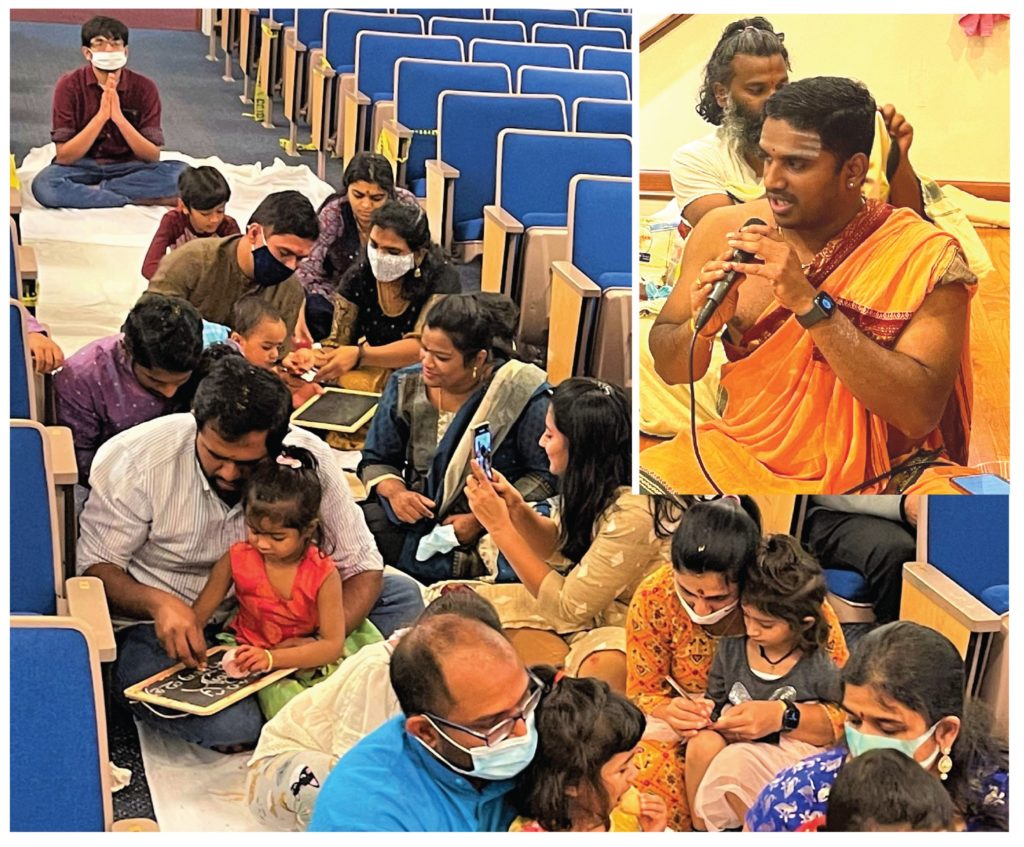
In the picture above, Pandit Shri Dharmateja Nagalingam at the Mission is helping parents with children sitting on their laps to write Om Ganeshaaya namah, Om Vaagdevyai namah or Om Namasshivaya or Om Narayanaya namah on slates using chalk pieces while reciting Sanskrit hymns.
==========================================================
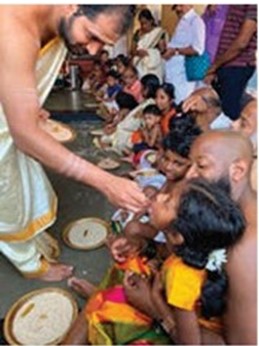
Typical Aksharabhyasam ceremony at the famous Mookambika Temple where the presiding Devi is worshipped as Saraswati, Lakshmi and Parashakti.
This famous temple is situated close to Mangaluru in Karnataka, India. Here parents or family elders initiate their kids to writing on rice paddy spread on brass plates using turmeric root as pencils. A detailed article here: www.tinyurl.com/aksharabhyasam-MookambikeTmpl ∎ — END
“It’s a Mad, Mad, Mad, Mad, World!”
Posted by admin in January 2022, Past issues on December 7, 2021
On November 6, Air Arabia Maroc’s flight 3O437 from Casablanca, Morocco (departure 5:00 PM local time), was headed to Istanbul, Turkey, a 4½ hour flight. Over one hour into the flight, the plane declared a medical emergency and was diverted to land on the island of Palma belonging to Spain because a passenger was asking for medical assistance.
On landing at Palma de Mallorca, the Spanish police said the patient appeared to be in a diabetic coma and was rushed to the local hospital with his companion. The Moroccan air traveler, it appears, feigned the medical emergency to divert the flight, ostensibly to enter Europe, because, at the hospital, doctors found the man to be in normal health. Besides, the police said, the person accompanying the patient fled as soon as they arrived at the hospital.
Meanwhile, as the plane was parked on the tarmac, after some time, twenty-one passengers jumped out of the plane trying to flee the airport. Twelve of them, who spoke French, were arrested, and the others escaped. The supposedly “sick” man was later arrested for “helping with illegal immigration and violating Spanish immigration laws.” All except one among the 20-plus people in this episode were Moroccans.
Police suspect this was a novel and “unprecedented” way for people wanting to enter Europe illegally. They are investigating whether “the whole episode was an orchestrated event or an isolated freak incident.” The investigation is continuing.
A Spanish law enforcement official said, “Those who fled will be prosecuted for non-compliance with aviation safety rules and illegal entry into Spanish territory, and will be deported to their country of origin.” None of them applied for political asylum. Details here: www.tinyurl.com/Ppl-Flee-MedEmrgncy. ∎ — END
Cynically Sublime — The Power of Wealth
Posted by admin in January 2022, Past issues on December 7, 2021
Almost instinctively, people in all societies at all times throughout history have pursued wealth, often single-mindedly. We cannot blame them, for this is how some of the great minds cynically looked at wealth:
1. He who has wealth is deemed noble, a scholar, proficient in the scriptures, discerner of tastes, an eloquent speaker, and attractive to even look at. All qualities are dependent on wealth.
2. Wealth is class, wealth is beauty, wealth is learning, wealth is fame, What can those deprived of wealth aspire to?
3. Good qualities are attained by wealth, not wealth by good qualities. The wealthy ones are served by the ones with good qualities, not the other way around.
4. The old, the famous, the learned, the skilled, the valorous, the ones well-versed in the scriptures, poets, noble men, all look at the wealthy and declare, “May you be victorious. May you live long!”
5. The poor are loathed in their own homes. The rich have affectionate relatives even in the other worlds.
Can you guess who is the author for each of the above? E-mail thepatrika@aol.com for the answer. — By K S Venkataraman ∎ END
On Saturday February 19, 2022 — By the Students of Pitt A Competitive Indian Classical Dance Program Raising Funds for A Good Cause
Posted by admin in January 2022, Past issues on December 7, 2021
By Stuthi Iyer and Roma Usgoankar, Dhirana, Pittsburgh
Dhirana is Pittsburgh’s premier competitive Indian classical dance event, hosted annually by students from the University of Pittsburgh. It is the only nationally recognized competitive program featuring Indian classical dance styles such as Bharatanatyam, Kuchipudi, Kathak, and Odissi. Every year, eight collegiate Indian classical dance teams from across the nation are invited to compete in the Dhirana event. World-renowned judges, who are dance teachers or practicing artistes (often both) and committed to preserving the tradition of these ancient art forms, evaluate the teams on nritta (intricate footwork), mudras (hand gestures), abhinaya (facial expressions), and other aspects of the dance. Every year, hundreds of people come and enjoy this spectacular program, immersing themselves in the ancient Indian story-telling tradition.
After hosting Laasya 2012, Nrityamala, the host team, created Dhirana with your support and the enthusiastic involvement of students to foster interest in Indian classical dances and raise funds for a Pittsburgh charity. All proceeds from ticket and food sales at Dhirana go to the Birmingham Free Clinic located in the South Side in Pittsburgh.
The Birmingham Free Clinic provides for the uninsured community-based collaborative critical medical care with compassion and dignity. The services offered at the clinic include cardiology, free eye care through Guerrilla Eye Service, ear nose and throat, dermatology, pediatrics, smoking cessation, diabetes, and gynecology. The clinic depends on volunteer teams of physicians, pharmacists, and nurses. In a single year, the clinic provides treatment to more than 3,000 patients, and the number is only increasing, and they need all the help they can get.
During the COVID-19 pandemic, with increased job insecurity and unemployment, more and more people depend on the clinic for their medical care. Dhirana is pleased to announce that over the past TEN years, we have donated $105,000 to the Birmingham Free Clinic, which has funded a 12-lead EKG device for the clinic, covered medication costs for patients, provided a consistent source of income for the Clinic’s annual budget, and most importantly, positively impacted the lives of thousands in the Pittsburgh area.
This year, we are striving to make our show bigger and better than ever. To put on a show of this magnitude, we depend on your generosity and support to cover the $16,500 expenses. We have been supported for the past decade by the Srinivasa Prasad International Foundation for the Performing Arts (SPIFPA).
Please support our efforts by reaching out to Dhirana’s Sponsorship Chairs, Stuthi Iyer and Roma Usgoankar, at dhirana.sponsorship@gmail.com, and take a look at our Sponsorship Packet at shorturl.at/pzMW2. We hope that you will join us on Saturday February 19th, 2022, at Soldiers and Sailors Memorial Hall. Please follow us on Facebook or stay updated at dhirana.com for ticket sales and updates! ∎ — END
Recalling My Own Aquatic Skills Growing Up in My Village in Gujarat
Posted by admin in January 2022, Past issues on December 7, 2021
By Harilal Patel, Monroeville, PA
Editor’s note: Mr. Harilal Patel, a long-time and successful entrepreneur in our area, is also active in the Pittsburgh Gujarati Samaj and the Hindu-Jain Temple. In 1978 he displayed his aquatic skills at the Three River Regatta by swimming across the Allegheny River from the North Side to Point State Park.
The story in the last issue on our instincts to display our skills in front of the public brought memories of my own younger days. Like Todittalai Vizhuttandinaar recalling the aquatic skills of his young days in his 2000-year old Tamil poem, I too remember my own younger days growing up in Valam, a large village with a long history, in Mehsana District, 50 miles north of Ahmedabad, Gujarat.
We had — and still have — a large talaab (lake) approximately 0.7 mile wide when it is full after the monsoon, with water 50 feet deep at several spots. One side of the lake had four large ghats for people to bathe. The opposite side was for buffaloes, cows, goats, and camels for their water needs. Around the talaab, we had a hospital, and rows of jamun, mango, and tamarind trees. And three temples.
Summertime drew us to the talaab, not just for bathing, but also for displaying our swimming skills. Competition among us was keen. Holding our breath and staying under water for the longest period was a game we reveled in. The daring among us swam to the deepest spots. Like the Tamil poet Vizhuttandinaar, we would reach the bottom of the talaab and come out with a fistful of gravel as proof that we had reached the bottom.
During August-September the village celebrated a festival with over 100 skilled swimmers carrying, while swimming, a palki (palanquin) with the deity (Krishna) across the talaab, with hundreds of villagers admiringly watching from the banks. The event ended with people carrying the palki in a procession into the village while chanting Bhajans. ∎ — END
From Wall Street to Onesies: Pallavi Golla’s Entrepreneurial Journey
Posted by admin in January 2022, Past issues on December 7, 2021
By Aire Reese, Pittsburgh, PA
When Pallavi Golla had her first son, Vyan, in 2015 she never thought her own problems as a first-time mother would be the start of a business venture. Pallavi was born and raised in the Franklin Park neighborhood of Pittsburgh. After graduating from Sewickley Academy, she attended NYU Stern School of Business majoring in Finance and went on to work in hedge funds for many years before attending business school in California.
After returning to Pittsburgh, Pallavi and her husband Mukul Patil started their family with their first son. She enjoyed taking Vyan on walks in a stroller but noticed that while she stayed dry in her activewear leggings and T-shirts, he would get hot and sweaty in cotton baby clothes. Their time was cut short because he would get heat rash. At night, traditional sleepwear would make him sweaty and fussy.
Pallavi started to wonder whether the same fabric used in adult active-wear could be used to make better baby clothing. She quickly realized that technical synthetic fabrics for adults were laced with harmful chemicals that would not be safe for small children. “There were adult companies pushing the limits on fabric technology,” says Pallavi. “But for children, there wasn’t anything new or innovative.”
Today, Golla is the founder of Lark Adventurewear, a premium e-commerce brand that makes clothes for children, and also for adults now, from a proprietary and sustainable Softek bamboo knit. The touch & feel of this fabric is something you must experience personally. It is buttery soft, temperature-regulating, UPF 50 sun-safe, and made to last.
Every product Pallavi and her team design is laser-focused on the following: functionality that makes life easier for parents and more comfortable for kids. And her customers have taken notice.
Since its founding in 2017, Lark Adventurewear has gained a loyal following on social media with over 60,000 followers and a passionate customer base extending from size 3-months through adult 3XL. Her company was featured in Vogue India, Inc Magazine and Forbes. But Golla is more interested in what her customers say. Hearing stories about a child having less eczema symptoms, a 6-year-old sleeping better through nights in Lark PJs, or providing the “best joggers I’ve ever had” to a tired mother is the feedback that keeps her working harder.
What once started in the spare bedroom of her home as she packed orders with her two small children has blossomed into a fast-growing e-commerce business with a warehouse in Central PA. Lark is on track to triple its year-over-year sales in 2021. While the road to success hasn’t been smooth, Pallavi says “I’m continually learning and trying to make better products for my customers. The best advice I can give anyone interested in pursuing a business idea or creating something new is to enjoy trying, failing, growing, and experimenting to learn what works.” ∎ — END
Dr. Raman Venkataramanan: A Portrait in Humility
Posted by admin in January 2022, Past issues on December 7, 2021
By Manjari Kulkarni, Upper St Clair, PA
Note: Manjari Kulkarni was born and raised in Pittsburgh. She practices orthodontics in the South Hills and lives with her family in Upper St Clair.
Almost daily, the mild-mannered professor of Tamil origin crossed my path as we began our days at the University of Pittsburgh’s Salk Hall, the location of the Pharmacy and Dental Schools. On several occasions, as we rode the elevator, Dr. Venkat (whom my parents endearingly call “the Pharmacy Venkat”) shared with me several life lessons, as he would with his own pharmacy students. Little did I know that this quiet professor who I would often see smiling behind the lens of a camera at big parties in social gatherings, is a hero among us.
Dr. Raman Venkataramanan is Professor of Pharmaceutical Sciences at the University of Pittsburgh School of Pharmacy. He received his B.Pharm from the University of Madras and M.Pharm from BITS, Pilani, India; and Ph.D. from the University of British Columbia, Vancouver, Canada.
After a postdoctoral fellowship at the University of Washington, he joined the University of Pittsburgh in 1980 as faculty. The adage “Luck favors the prepared,” applies to Dr. Venkat perfectly. In 1982 he was approached to work with the world-renowned transplant surgeon, Dr. Thomas Starzl, to conduct clinical research on anti-rejection drugs for liver transplants. Cyclosporine was the most researched drug for anti-rejection then, and the biggest challenge in organ transplants was solving the problem of the rejection of the transplanted organ by the recipient’s body.
Dr. Venkat vividly recalls Dr. Starzl visiting him in his office, holding a small bottle of a chemical he had learned about at a conference in Japan. He asked Dr. Venkat if he knew what this bottle held. Dr. Venkat knew this was a preliminary chemical studied as a possible anti-rejection drug for liver transplants. After this meeting, Dr. Starzl recruited Dr. Venkat to be a lead researcher on this product. The chemical, at that time, was called FK-900506. Dr. Venkat and his colleagues studied its use in small and large animal transplant models.
Eventually, the chemical, called FK-506, became known as Tacrolimus, the primary immunosuppressive drug currently used in liver as well as other transplants. This was one of the few drugs to get the quickest FDA approval due to the efforts of Dr. Venkat and his colleagues. This work made Pittsburgh a leader in organ transplants. Dr. Venkat considers himself blessed that he directly worked with patients to see how his efforts were helping transplant patients. Along the way, Dr. Venkat also published nearly 400 research papers.
In October 2021, the American Association of Pharmaceutical Scientists (AAPS) honored Dr Venkat with its prestigious Distinguished Service Award, appreciating his lifetime service as a member of AAPS. This was for him the culmination of a string of recognition he received from his peers. Details here: www.tinyurl.com/VenkataramananPeerRecognition
Inspired by his grandparents, Dr. Venkat chose healthcare as his career calling. Unable get into medical college in Tamil Nadu, India despite his academic excellence, he chose pharmacy as an alternative. His greatest interest has been teaching and he is passionate about sharing what he has learned from his countless mentors and personal heroes.
Outside of pharmacy teaching and research, Dr. Venkat teaches Sanskrit he learned from Shri Rajagopala Iyer in India (and later getting it refreshed in Jyotsna Kalavar’s classes here) to kids at the Chinmaya Mission,
Dr. Venkat, again with humility, describes his wife Padma as “the brainy one,” who is always learning and changing to keep herself sharp. He says, “I never could have had any success without Padma’s support.” Dr. Venkat, reflecting on turning 70 recently, quotes from Vivekachoodamani attributed to Adi Sankara, “जन्तूनां नरजन्म दुर्लभम्,” Jantunaam narajanma durlabham, “Being born as a human among the living is rare.” And he adds with a smile. “And then, being able to do what we are passionate about is a bonus.” Who can disagree with that? ∎ — END
Pittsburgh Airport Breaks Ground for $1.4 Billion New Airport Terminal
Posted by admin in January 2022, Past issues on December 7, 2021
The Pittsburgh International Airport, owned and managed by the Allegheny County Airport Authority (ACAA), is getting a much-needed modernization. On Thursday October 14, 2021, ACAA formally broke ground at the construction site for a new terminal. County Executive Rich Fitzgerald, the ACAA’s CEO Christina Cassotis, its chairman David Minnotte, and Pittsburgh’s Mayor Bill Peduto, among others, addressed a gathering of over 300 people — the region’s elected officials, business and labor leaders, contractors, and invited guests.

One point in Fitzgerald’s speech was encouraging: after losing population for the last six decades, Allegheny County’s population increased in the 2020 census. It is now 1,250,000, up by 2.2% (or 27,000), compared to the 2010 census. And the county population is more diverse (24% in 2020 compared to 18% in 2010), and younger, the features recognized as catalysts for growth.
The current layout of Land- and Air-side Terminals with 75 gates in four concourses, and a 0.5 mile-long connecting train, is too unwieldy, too old (opened in 1992) and too costly for upkeep for the 170-plus daily flights today. At its peak two decades ago, the airport handled nearly 700 daily flights with 20 million passengers/year passing through its gates.
The new terminal will meet its current and future needs; will reduce operating costs and carbon footprints; will give better ambience for departing passengers from check-in, security through boarding; and for arriving passengers from landing, baggage claim through leaving the airport.
How we ended up with 75 gates in four concourses: In the 1980s, with US Airways’ hub expanding at the Pittsburgh airport, the number of passengers passing through its gates increased rapidly. Most were transit passengers changing flights to reach their final destinations. So, the then state-of-the-art terminal with 75 gates in four concourses was built in 1992 to meet the airline’s demands.
Then the 9/11 disaster in 2001 devastated the airline industry. Meanwhile, US Airways was expanding its presence in Philadelphia. When US Airways closed its PIT hub (and moved to Philadelphia), the volume of passengers at the Pittsburgh airport plummeted to just over 6 million per year. Over 15,000 jobs vanished in the region. This devastated the airport’s operations and the region’s image, even as we were struggling to recover from the steel industry’s death here in the 1970s.
Ironically, we learned the same bitter lesson twice: overdependence on steel devastated the region when the Mighty Steel died in the 1970s, and over dependence on US Airways (accounting for over 85% of flights at its peak at PIT) devastated the airport when it closed its hub here.
Besides, before shutting down its hub, the bad faith in which US Airways had negotiated with our region’s elected officials and airport officials left deep scars. So, not many at ACAA and among our elected officials wanted the airport again to become a big hub for another air carrier. Twice bitten, thrice shy. So, seeking regional taxes to fund airport modernization was just out of question.
Then came Nature’s boon in the form of Marcellus shale found in abundance in Pennsylvania, West Virginia and eastern Ohio. The shale lying between 5000 to 8000 feet underground is a source for natural gas, a clean energy fuel for domestic & industrial use and electric power generation — it has the smallest carbon footprint and no solid waste products such as fly ash, as with coal. Radio talk show hosts boast that natural gas for Pennsylvania is what is petroleum is for Saudi Arabia.
Over 9000 acres of land around the airport belong to ACAA. The airport allowed a local gas company to drill 45 gas wells in its land to generate revenue for the next several decades. With the natural gas running five generators and 10,000 solar panels already installed, the airport’s microgrid generates 20 MW of power while its needs are only 14 MW. (source: www.tinyurl.com/Microgrid-at-PIT).
Meanwhile, the Pittsburgh region slowly has redefined itself in terms of financial service companies, higher education, innovative technologies (robotics and AI), as an incubator for startups, and healthcare industries. Along the way, the Pittsburgh airport too grew. From barely 70 daily flights after the US Airways shut down to over 170 daily flights today; from just over 6 million passengers/year at its nadir to over 9 million passengers/year now; from just under 10 air carriers to 17 air carriers at PIT now with more nonstop flights to more cities. The airport’s freight handling too has increased over the years.
Deciding not to seek funds from local taxes, ACAA took the plunge to modernize the airport terminal with its own resources. The work started as early as 2017, but the 2020 Covid pandemic stalled the work.
With the fear of the Covid-19 receding, the 4-year, $1.4 billion modernization project has started. Its main features as detailed by Messrs. Fitzgerald, Cassottis, and Minnotte in their speeches are:
1. The project is funded without local taxes. The businesses that use the airport — the airlines who use the airport (landing fees and gate rentals), the concession shops at the terminal, and passengers using the facility will bear the cost. The funds will be raised through bonds issued by ACAA on its own strength. (Note: For the same reason, if the modernization results in a resurgence of the airport’s fortunes generating good net incomes year after year, one wonders whether ACAA will be obligated to fund projects outside the airport — such as a light rail transit from the airport to the city. And passengers will see increases in parking fees and charges for food and drinks at the airport — as in airports in New York, Chicago…)
2. The land-side terminal and the People Mover train will be gone (see the picture on the cover page), and the air-side terminal will be refurbished with new check-in counters and a baggage handling facility and passenger pick-up systems.
3. The modernization is for the region’s current and future travel needs, and not for making the airport a big hub for another air carrier. (Bad experience with US Airways and the good olde grandmotherly advice not to put all your eggs in one basket).
4. The existing concourses will be retained and refurbished, but with fewer gates with better ambience. More concession stands and shorter times for passengers to reach departure gates and retrieving baggage on arrival.
5. A multilevel parking lot walkable from the baggage claim area.
6. State-of-the-art design using natural light, fresh air, attractive ambience, open space, and for mass transit, taxis and passenger pickup… …
7. Recycling 75% of the demolition debris from the existing structures (such as concrete slabs) and re-using them for construction.
8. Childcare services during construction on site for the hundreds of men and women working there. Workplace safety from the get-go.
9. Over 14,000 direct/indirect jobs created by contractors and subcontractors with taxes in millions of dollars feeding into local governments.
In 2025, we will be in for a grand dedication ceremony for a stunningly ultramodern reincarnated airport terminal. And also be ready for higher charges for all services such as parking fees, baggage carts, and all concessionaires at the airport terminal. ∎ END
Dr. Raman Venkataramaman’s Peer Recognitions
Posted by admin in January 2022, Past issues on December 4, 2021
1. Distinguished Scientist Award AAiPS (2016)
2. Honored/invited speaker at Agents for change – Alumni recognition Symposium organized by the University of British Columbia Vancouver Canada
3. APhA Tyler Award for Stimulation of Research (2011)
4. University of Pittsburgh- Provost’s Award for Excellence in Mentoring (2009)
5. ACCP BMS Award for Mentoring in Clinical Pharmacology (2009)
6. Ranbaxy Research Award in Pharmaceutical Sciences, India (1998)
7. Distinguished Research Scientist Award by The Institute of Kidney Diseases and Research center and the Institute of Transplantation, Ahmadabad, India (1998)
8. Fellow of the American Association of Pharmaceutical Scientists (1996)
9. Fellow of the American College of Clinical Pharmacology (1989) ∎ — END
Did You Know We Have A Second Fully Functioning Civil Airport in Pittsburgh?
Posted by admin in October 2021, Past issues on October 4, 2021
Did you know that we have a fully functioning airport on 24x7x365 basis — it even has its own airport code AGC — in West Mifflin, an eastern suburb?
Did you know that till 1954 when PIT came into being, AGC, built in 1931, was the commercial airport for our region’s burgeoning travel needs with the growth of the steel industry?
Did you know that ACG was one of the first three airports in the nation, and also the first airport with hard-surface runways?
I too didn’t know these facts till I attended the 90th anniversary of the airport in September. This is one reason why we all should take an interest in our region’s rich history and what is happening around us right here.

After completing a $2.5 million project refurbishing the airport’s passenger facilities, on Saturday, September 25, organizers celebrated the 90th year of the airport. Elected officials and the people who run the airport addressed a gathering on the highlights of the airport.
County Chief Executive Rich Fitzgerald in his brief address informed the audience that the airport brings over $2 billion in business to the region with over 60,000 arrivals and departures annually — mostly charter flights and privately owned planes. The airport also serves other functions, such as medical emergencies, disaster emergencies, and also for training for new pilots.
The Civil Air Patrol (CAP) also operates from this facility. CAP, the official US Air Force auxiliary, is a nonprofit organization tasked by the US Air Force to help in inland search-and-rescue operations and assist in other security-related activities.
A more detailed story on these will be in the next issue. — END
कन्यादानं in Vedic Weddings — Receiving the Bride is As Important
Posted by admin in October 2021, Past issues on October 4, 2021
In Vedic and Christian weddings all over the world, the giving away of the bride is an poignant, emotional part of the ceremony. While the details vary widely, the tradition of the father handing over his daughter to the groom is common in both. I am sure, some anthropologist somewhere has studied how this ritual is common in both cultures even though separated by thousands of miles, and irreconcilably differing in theology — salvation (Christians) vs. liberation (Hindus); obedience & sin (Christians) vs. karma & avidya (Hindus).
In August, I attended a cross-cultural Hindu Vedic wedding on the West Coast. Shri Sashidhara Somayaji (contact number 408 800 5444), one of the pandits conducting the wedding, said this in facile English before kanyaadaanam, widely understood as the parents of the bride giving away their daughter: “We understand कन्यादानं (kanyaadaanam) by splitting the phrase using Sanskrit Sandhi rules into कन्या + दानं with कन्या (kanya) meaning bride; and दानं (daanam) contextually meaning “gift.â” Incidentally, Pandit Somayaji, who is from Udupi in Karnataka, is facile in Kannada, Telugu, Tamil, Malayalam, Tulu, Hindi, Sanskrit and English.
He continued: “Understanding कन्यादानं exclusively as parents giving away their daughter is incomplete. Following Sanskrit’a sandhi rules, कन्यादानं also splits into कन्या + आदानं (aadaanam). आदानं (aadaanam) means receipt or receiving. So, कन्यादानं should be correctly understood with emphasis on both parents giving their daughter away and the groom accepting her in the ceremony.” After all, when someone gives, someone else has to receive. Without some one to receive, the “gifting” part has no meaning.
The आदानं part gives an entirely different flavor to the ceremony with the obligation on the groom to live compatibly with his new bride, with the implied responsibility on the bride also in their journey together. — END
Human Instincts to Display One’s Prowess
Posted by admin in October 2021, Past issues on October 4, 2021
From Olympics to college and school sports, we see the natural instincts of youth to compete with each other and display their prowess to an admiring audience. It is an absolute delight to see six- and seven-year-olds running on soccer fields screaming and chasing after each other to snatch the ball and move it towards their opponents’ goal post. This instinct to display physical skills is not only in competitive sports, but also in simple family gatherings, as I found out recently.
We were in California in August for a family wedding, when our daughters also added a few vacation days for us and our grandkids to stay in a rented place. The place had an indoor pool with an 8′ deep diving end. Our nine-year-old grandson, barely 4′ tall, knows swimming and was trying to learn diving from his dad. After a few trials and some serious struggle, he did get the hang of how to dive deep into the pool.
No sooner had he got the hang of it than he wanted to show his prowess to his grandfather, who, growing up in India in the 1960s, was a stereotypical urban kid, not even SEEING a swimming pool. My grandson told me, “Thatha, toss a coin at the deep end. I will dive and get it for you.†I was nervous, not knowing whether he had the lung capacity to dive deep in the pool, search for the coin, reach the bottom, pick it up and come out. He pestered me. I looked at his father, and he said, “Go ahead.”
With hesitation, I tossed a quarter into the deep end of the pool. The kid dived confidently into the deep end, looking for the coin. Then, picking up the coin, and with a great sense of accomplishment, he soared out of the pool like a dolphin with a beaming smile, showing me the coin in his hand. He asked me to do this again and again.
Seeing my grandson trying to impress me with his aquatic skills, I recalled an old Tamil poem I had read decades ago. This poem is in the 2000-plus year-old Tamil classic Puranaanooru.
Puranaanooru is an anthology in the Tamil literature, written by both men and women poets 1800 to 2200 years before our time. The 398 verses are in classical Tamil with very few Sanskrit words interwoven, indicating that Tamil’s history is parallel to Sanskrit’s.
The Puranaanooru verses describe the valor, pride, pettiness, generosity, and even philandering of kings; admonish them to be loyal to their wives; advise kings not to let bureaucrats harass citizens; describe the grinding poverty of citizens during wars, thus trying to dissuade kings from going to adventurous wars.
But the poem I recalled is quite different. In this, the poet, Todittalai Vizhuttandinaar, in his very old age, recalls with vivid imagery the innocent days of his youth long gone, very much like my own. He describes the prowess he and his buddies showed in their swimming skills to the admiring onlookers on the banks of a large, deep village pond after the rains. The sentiment the poet expresses is universal transcending time, place, and culture that separate humanity into distinct linguistic, religious, and cultural groups. Here is a free style English translation of the verse:
It feels sad to think about it now.
On the sandy edges of the pond with cool water,
we played with girls who made dolls with the clayey soil,
decorating them with flowers plucked from trees nearby.
Holding hands in the innocence of youth,
we hugged each other, swaying this way and that.
Climbing the Marutha (Arjuna) tree on the bank
with its branches sagging towards the pond,
we dived into the deep pond with a thud and a splash.
Reaching the bottom, we returned showing to the
amazed onlookers on the shore the fistful of sand
we grabbed from the pond’s floor.
Where did that innocent youth go?
Isn’t it pitiful that having become old now, tremblingly
I walk holding a metal-capped stick while coughing,
barely uttering a few words in between?
Sitting on the poolside in balmy California, I was amused to see similarities between my nine-year-old grandson trying to impress me with his aquatic skills and what Todittalai Vizhuttandinaar, the senile Tamil poet, recalled in a 2000-year-old poem on his youth long gone. The Tamil poem in Puranaanooru in its original is available here: www.tinyurl.com/Puranaanooru-Swimming — END
Obituary: Vijay Kapoor (1937 to August 21, 2021) — A Well-Liked Long-Time Resident & Music Lover
Posted by admin in October 2021, Past issues on October 4, 2021
By Shambhavi Desai, Bridgeville, PA
Vijay Kapoor of Mt. Lebanon, Pennsylvania, a long-time resident in our area, well-known and well-liked by all who interacted with him, passed away in his sleep at St. Clair Hospital on August 21, 2021. He was 84.
He was born on April 28, 1937, in Hyderabad, India, to Shadi Ram and Krishen Kaur Kapur, as the youngest of nine siblings. He got his bachelor’s degree in arts. In 1975, Mr. Kapoor came to the U.S. with his two children and lived with his older sister, Shakuntala Prabhu, with whom he was very close. His wife, Sulochana, joined him later. Before coming to the United States, he was in the Indian military, lived in Zambia, and Ottawa where he worked for the Indian High Commission. He was with Allstate Insurance since 1977, till he retired in 2009.
Many in Pittsburgh knew Vijay Kapoor as a soft-spoken gentleman with a polite disposition. His passion was music, a trait he got from his mother and brother. He told me in an interview years back, “I listened to Bengali and Hindi songs on the radio growing up.†An ardent fan of legendary singers like Pankaj Mullick and Hemant Kumar, he sang Hindi and Bengali songs at community gatherings in his melodious voice. He was facile in Telugu and Urdu as well. Mr. Kapoor was with the Bengali Association of Pittsburgh. He chuckled and told me once, “I am a Bengali soul in a Punjabi body!â€
Kapoor had a large personal collection of Indian gramophone records from the 1930s, 40s and 50s, well-kept and cataloged in his basement where he spent his time in retirement, lost in his world of music. Some of his music collections are on this link: www.tinyurl.com/Kapoor-Music-Albums.
He is survived by his wife of 56 years, Sulochana; his children, two sons (Hemanth Kapoor and Vikram Kapoor; and daughter Krishna Kapoor Johnston) and their spouses; and his grandchildren.
Vijay Kapoor’s Hindu cremation was at the Beinhauer Funeral Home with Pandit Sureshchandra Joshi from the Hindu-Jain Temple helping the Kapoor family with the last rites.
A grateful note from the editor: Vijay Kapoor (and his son Hemanth) supported the magazine with ads in its early crucial days, the ads that they perhaps did not need for their business, just to help the magazine survive. — Kollengode S Venkataraman — END
Monroeville’s Peace Pole Installation Ceremony
Posted by admin in October 2021, Past issues on October 4, 2021
By Praveen and Pratheema Kumar, Monroeville, PA
Note: Praveen, with his background in computer science, is pursuing his PhD program in machine learning while working in the same field. His passion are sports car and coffee. Pratheema, an electrical engineer, works for a semiconductor company. She loves cooking, baking and dancing. She has learned Bharatanatyam. They live in Monroeville.
If anyone wanted to have an outdoor event in our area, July 31st, 2021 was the day — azure sky with patches of white clouds slowly drifting, temperatures in the 70s and gentle breeze. The Rotary Club of Monroeville could not have chosen a better day for dedicating their Peace Pole, reminding us of the importance of peace in this world! Around 150 people from diverse backgrounds joined in the celebrations.
Peace Poles, fabricated with different materials, are internationally recognized symbols of the hopes and dreams of humanity, standing vigil in silent prayer for peace on earth.
In the wake of the Second World War, Masahisa Goi of Japan 1955 in Japan, came up with the idea of installing Peace Poles. The first few Peace Poles outside Japan came in 1983. Since then, more than 250,000 Peace Poles are in over 190 countries. The central theme in the monument is the message “May Peace Prevail on Earth.â€
Rich Fitzgerald, County Executive of Allegheny County, was the special guest for the event. Mr. Fitzgerald said Pittsburgh is a city that is very diverse and has been welcoming people of all backgrounds and nationalities for several decades and will continue to do so in the future. Moments like these give us time to pause, he said, to reflect and respect the journey we have come through as a country, and events like these make us think forward on ways to strengthen our cultural diversities even more by respecting everyone and treating everyone equally.
Earlier, Brandon Markosek, the Democratic State Representative in Harrisburg (from District 25 covering Monroeville) stressed that it is paramount that we all come together as one, we treat everyone fairly and equally and for all to feel part of the community. The Peace Pole, Markosek declared, “conveys the fact that we are one country, and we are one people.â€
Setting the stage for the event, earlier, the president of Monroeville’s Rotary Club, Gerry Maynard, welcomed the invited guests and the gathering. He highlighted the significance of installing a Peace Pole as a symbol for welcoming and nurturing diverse cultures among people of different national origins, ethnicity, and religions. He exhorted everyone in the audience to extend diversity, equality, and inclusion in simple everyday tasks by making them a priority.
SOm Sharma, the previous president of the club, detailed the tremendous efforts that went into the Peace Pole project. Peace, he said, is at the very top of Rotary’s Seven Areas of Focus, and that Rotary’s motto, namely, “Service above Self†continues to motivate fellow Rotarians all over the globe. Hundreds of thousands of Rotarians in more than 35,000 clubs worldwide continue to spread peace around the world.
There are plans to add “Hiroshima Trees,†to send a strong message of human resilience. The Hiroshima trees survived the US dropping of the nuclear bomb in Hiroshima in Japan in August in 1945. The Peace Pole will only be a beginning inspiration for all to create programs nurturing peace and harmony in the community.
The Monroeville Rotary Club, a year ago, decided to have a Peace Pole in the community. A team of enthusiastic Rotarians did their research and engaged the services of a reputed sculptor, Joel Selmeier, of Cincinnati, Ohio. The Rotarians also identified the different languages spoken in and around Monroeville, an astounding number of forty languages to be cast on the pole. Stainless steel was the choice of the material – we are after all, the Steel City — based on our location, weather patterns and durability (expected life span of 400 years). The $15,000 project, funded mostly by the club’s own funds, took ten months to complete.
Through the program, Mr. Maynard randomly picked one of the 40 languages and invited people from the audience who could speak that language. He asked them to translate the phrase “May Peace Prevail on Earth,†and the phrase was translated into Hindi, Punjabi, Japanese, Hebrew, Urdu, Thai, French and Bahasa (Indonesia).
The event ended with a closing song “Let There be Peace on Earth†by Diane Milowicki while the audience stood up and joined Diane in the singing, followed by the release of seven doves symbolizing the seven continents.
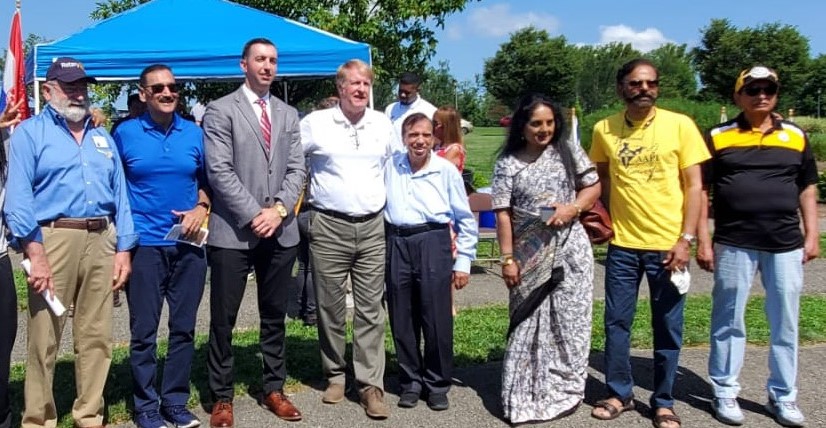
It was a great event, where people of different cultures, color and ethnic backgrounds were present unitedly to show their support to the “Peace Pole Inauguration Ceremonyâ€.
Suzan DeLaney, member of the Murrysville Rotary Club emceed the program, with Diane Milowicki giving the national anthem in the ceremony. — END
Hate Crimes Inflict Fear Among Citizens’ Help FBI to Stop Them
Posted by admin in October 2021, Past issues on October 4, 2021
By Mike Nordwall, Special Agent in Charge
FBI Pittsburgh Field Office, Pittsburgh,
The number of people reporting they’ve been a victim of a hate crime in Pennsylvania nearly doubled between 2019 and 2020 according to the FBI’s annual hate crime statistics report. That;s why the FBI Pittsburgh Field Office is engaged in a multifaceted statewide effort to build public awareness of hate crimes and encourage reporting to law enforcement.
The FBI is the lead investigative agency for criminal violations of federal civil rights statutes. Hate crimes, defined as a traditional offense with an added element of bias, are the highest priority of the FBI’s civil rights program because of the devastating impact they have on families and communities. The Bureau investigates hundreds of these cases every year, but hate crimes are often underreported to both federal and local law enforcement
At the FBI, we are very concerned about the lack of reporting when it comes to hate crimes. We want the community to know we are here for them. This campaign is a way to enhance collaboration between the FBI and our local and state partners, not just in law enforcement, but with the many community groups who work and see victims on a daily basis that are too scared to report the crime. The more information we can get from the community, the more trust each side will earn, and we’ll all be better able to attack the problem head on.
Hate crimes are not only an attack on the victim, they threaten and intimidate an entire community. The FBI works closely with state, local, and tribal authorities on investigations, even when federal charges are not brought. FBI resources, forensic expertise and experience in identification and proof of hate-based motivations often provide an invaluable complement to local law enforcement hate crime cases.
If you believe you have been the target or victim of a hate crime or other civil rights violation, contact the FBI at 1-800-CALL-FBI (225-5324) or the FBI Pittsburgh at (412) 432-4000 or submit a tip online at https://tips.fbi.gov. Tips can remain anonymous and can be made in an individual’s native language. — END
The War Many Almost Forgot, Finally Ends!
Posted by admin in October 2021, Past issues on October 4, 2021
I was in the Bay Area for a wedding in mid-August when President Biden announced that on August 31, the last American soldier would be leaving from what he aptly called the “Forever War†in Afghanistan costing $2.2 trillion and lasting 20 years. Most of the money was spent on the military, with $85 billion for training Afghanistan’s military. Here are the war’s mortality numbers (www.tinyurl.com/AfghanWar-HumanCost):
US service members through April 2021: 2,400.
Contractors employed by the US: 3,800.
Afghan national military and police: 66,000.
From NATO and other allied service member states: 1,150.
Afghan civilians: 47,200.
Taliban and other opposition fighters: 51,200.
Aid workers: 440.
Journalists: 70.
The Afghan War is the longest in US history. See the adjacent table. The way the war ended was bizarre. The US handed the country back to the Taliban, which it had overthrown twenty years ago. Many in the Taliban team with which the US negotiated in Doha — and in the new Taliban government now — were incarcerated in the Guantanamo prison for the ghastly 9-11 attack on the Twin Towers in New York. The US image as the Sole Superpower and its credibility among allies has been eroded.
The US-trained Afghan army vanished at astonishing speed and its weak president Ashraf Ghani fled the country. There is irony in Ghani’s pedigree: bachelor’s degree from the American University, Beirut; PhD from Columbia; taught at Berkeley & Johns Hopkins; worked at the World Bank and coauthored a book, ironically titled, “Fixing Failed States.â€
It was my nostalgia trip to the Bay Area, where I lived for four years in the 1980s. We revisited the touristy Redwood Forest and the Berkeley campus. In the 60s and 70s, the Berkeley campus of the University of California was notorious for student protests on issues considered taboos in the US mainstream.
So, with the US announcing our withdrawal from Afghanistan after the longest, costliest war, I expected some public demonstration of relief, if not celebrations, on the war ending. But all I saw was total nonchalance — even on Berkeley’s notorious Telegraph Avenue, where, decades ago, the most radical social outcasts gathered for all radical causes. People were going about their business in coffee shops, campuses, and public squares as if it was somebody else’s war somewhere faraway. In the campus where “Question Authority†was emblazoned on many T-shirts decades ago, a teenager was wearing a jacket with “OBEY†printed on it. While I was wondering how much the place has changed, my daughters told me OBEY is a brand name for a line of fashion apparel.
While editorial and opinion writers are telling us in bits and pieces how the Afghan war ended in defeat and retreat, here are my peripheral observations, as a tax-paying citizen:
• The Vietnam war (costing ~$170 billion in the 1970s, or ~$1 trillion in today’s dollars) was funded by increases in personal and corporate taxes and through bonds. That is, the citizens of that era bore the cost of the war. But the $2.2 trillion Afghanistan war was funded entirely through long-term public debt. It is estimated (www.tinyurl.com/AfghanWar-Interest-on-Debt) that by 2050, the interest on the debt will be over $6 trillion. For the next 30 years, people who had no say on the war — our children and grandchildren — will be paying for the war as deferred payment. For the Sole Superpower republic to go to war on borrowed money, expecting our children and grandchildren to redeem the debt is irresponsible, to say the least.
• Only 1% of the nation’s young and able-bodied went to the war in Afghanistan. This is because of the all-volunteer forces that the US boasts of. As the war dragged on for twenty long years, these voluntarily enlisted men and women ended up going to Afghanistan on multiple tours of combat duty. The psychological toll this took on these men and woman — not to speak of their spouses, parents, and children — is incalculable.
• With most of the 900,000-stong US forces serving multiple times in the war, over 21,000 were wounded. Taking care of these war veterans (many in their 20s and 30s now) for the next several decades will cost the federal government another $5 trillion, by one estimate. So, our children who are already harsh towards us, their baby-boomer parents, for bankrupting Social Security and Medicare, are burdened with an additional $11 trillion ($6 trillion as interest on debt and $5 trillion for the Afghan war veterans).
• The all-volunteer army was the result of the Vietnam war, which the US fought — and lost — with compulsory military service (called the draft) from all able-bodied youngsters from all socioeconomic backgrounds. There was widespread opposition to the war from middle class families and above in campus protests across the nation in the 1960s and 70s, as part of the Counterculture Movement. Many from rich or influential, or powerful families dodged the draft using a variety of legal maneuvers that many middle- and working-class youngsters were not even aware of. Among those who dodged going to fight the communists in Vietnam are Presidents Bill Clinton, George W. Bush, and Donald Trump.
Many draftees did not know what they were fighting for, and some were even opposed to the war. The one-year tour of duty for the draftees in far-off tropical jungles twelve time zones away sapped the morale of the army, so critical for invading militaries.

This is how the US or any other Big Powers look at their Foreign Policy options.
In the mid-1980s, in PBS’s 13-part-series Vietnam: A Television History, Gen. Nguyen Giap, the mastermind of the North Vietnam army, said this about the US fighting with unwilling draftees: While we waged one 20-year war, you waged 20 one-year wars.
The draft was one military factor among other non-military ones for the loss in Vietnam. So, the US military ended the draft and opted for an all-volunteer military. Forty-five years later, even with the all-volunteer army, the US still lost in this 20-year long Afghan war.
• Both GOP and Democratic presidents, the US Congress, the US Defense Department and intelligence agencies all have contributed by omissions and commissions to the way this war dragged on. Since every government institution is culpable, nobody will be accountable in the end.
Retreating from a war in defeat for an invading army is always messy, even for the Sole Superpower, no mater how well you plan for it. With noncooperative countries all around (China, Tajikistan, Uzbekistan, Turkmenistan, Iran and Pakistan) and with no access to international waters, the retreating U.S. military walked away leaving behind tens of thousands of assault guns, thousands of vehicles and military hardware. Now, this military hardware worth billions of dollars is in the hands of the Taliban victors, the Pakistan military (the Taliban’s advisors and mentors), and other non-state terrorist organizations.
President Biden was unapologetic for ending this long war, though it was painful to see the way it ended — chaos in Kabul airport, disarray in Afghanistan, and the Taliban forcing the Afghan women back to the 18th century. The majority of Silent Americans of all persuasions are with him.
In the final analysis, for the last twenty long years, did we even know we were going through the costliest war? — END
The Covid Meltdown of Indian Performing Arts
Posted by admin in July 2021, Past issues on July 1, 2021
By Samar Saha, Irwin, PA
Samar Saha, having hosted several artistes and organized several house concerts in his elegant home, is quite familiar with the devastating situation of Indian performing artistes in the Covid pandemic. Here are his thoughtful observations.
In a recent survey by Singapore’s Sunday Times, many respondents believed, musicians ranked among the top non-essential workers. As Covid-19 spread its tentacles across the world choking economies, claiming lives, and confining millions to their homes, music, an ‘essential’ part of our existence, became non-essential.
Musicians all over the world — particularly in India — are facing the roughest time in the pandemic. In India, its film industry and live theaters froze; light and classical music concerts and dance recitals simply vanished, affecting the livelihoods of hundreds of thousands of people directly and indirectly living off these activities. Many artistes are reassessing their personal situation within the industry.
The lives of musicians have changed — the worst affected are the accompanying artistes on the tabla, violin, mridangam, ghatam, guitar, flute, sarangi… Some of the hands that created wonders on these instruments have been forced to do house painting to earn their bread. To keep their music alive, they have started on-line concerts. But to ardent fans, on-line programs are not real — no matter how we spin it.
A Burmese Pagoda, not a Hindu temple Gopuram, is a better metaphor for Indian performing arts. In Karnatic music, stars like Sudha Raghunathan are at the top of the Pagoda. The pagoda has a wide base where thousands of faceless accompanists struggle to make a living. The handful few stars at the top suck up all the money, fame, and glory.
In this pandemic, the artistes, both stars and their accompanying artistes, were forced into a deep freeze. The stars have enough savings, and many others have careers outside the arts to tide them over the rough patch; or are married to spouses having stable incomes. But the not-so-famous accompanying artistes who depend solely on their arts income are struggling. A suicide attempt by a middle-aged harmonium player in Howrah in May sent shock waves. There was no food at his home and no resources to get any.
When I talked to the Kolkata-based world-renowned sarod player, Tejen Majumdar, he told me how he himself was depressed during the lockdown: “For an accompanying artiste, without concerts, there was no work, no income, no stipend; and the savings were gone. Then there was the matter of dignity. How does an artiste of good stature, who has given so much to the world by way of his art, put out his hands and beg for money?†Majumdar continued, “When I heard that the pandemic drove the harmonium artiste towards suicide, it was difficult and painful for me to come to terms with it.â€
Stories like this also came from renowned tabla player Samir Chatterjee, who lives in New York. “I know musicians who are playing the lehra for a few hours for Rs 150. It’s a pity,†says Chatterjee. The people Chatterjee conversed with are reasonably well-known artistes playing tabla/violin/mridangam/ khanjira/harmonium, among the hundreds he knows. The details of their stories vary, but the theme is depressingly the same.
Take the 62-year-old Gurupriya Sundaresan, a vocalist for 45 years in Tiruchy, TN. He said in an interview that he was forced to go for “odd jobs like painting homes.†Others he knows are working part time as “security guards, postmen, and flower sellers,†to keep the income coming.
Performing artistes are the bulwark of the cultural history of any society, and integral to the economic and social fabric of nations. In recent months, Germany, Sweden, Denmark, Norway, and Finland have announced aid packages for their cultural sector, because they consider the arts as their national heritage. In India, so far, there has been no concerted effort in the same direction.
The zonal offices of Sangeet Natak Akademies (SNA) have reached out to some folk and tribal artistes who are registered with them. However, for artistes who are not affiliated with SNA, the situation is particularly grim. These include skilled artistes making musical instruments, nadaswaram players in temples, audiovisual technicians, instrument tuners, home-based music teachers, theatre artistes, costume designers, and make-up artistes, among others.
“Since the sector is completely disorganized, serious efforts in various directions are the need of the hour. There are hundreds of artistes who are not registered with any government body,†said Hindustani classical vocalist, Shubha Mudgal, in an interview with The Indian Express.
Covid-19 has exposed the soft underbelly of the music industry in India. The sarod artiste Tejen Majumdar is emphatic: We need a serious intervention.†Any solution — short term or long term — will require finding out: a) How big is this problem? (It is indeed big.) b) What are the short- and long-term needs? c) Can they be tackled at the local level, or will it require larger programs over longer durations?
These are the questions facing music aficionados. Some private efforts have been recently initiated. But these are limited, at best. Karnatic vocalist and Magsaysay recipient T.M.Krishna monetized one of his concerts in April to help artistes in need. He also created a fund for helping makeup artists, parai, koothu and karagattam artistes, instrument makers, nadaswaram and thavil artists, theatre artists, people working backstage and audiovisual technicians.
Talking to The Indian Express, the Hindustani classical vocalist Shubha Mudgal, who has given a recital in Pittsburgh, said, “We started discussing early on because we went through several cancellations ourselves.†Mudgal began calling artistes she knew — some living in remote places. Mudgal did not want to rush into doing a monetized concert to raise funds. She wanted to figure out if money could be raised for long-term needs because paying these artistes small amounts would only last for a short time. She got in touch with people/organizations working with musicians at the grass roots level to find artistes in desperate need.
Now many musician groups and industries related to music have joined the fray — not altruistically but for their own long-term survival. Realizing the deleterious effects of declaring performing “non-essential,†many big industrial names — like recording companies, Reliance Industries, film industries, software companies, famous and not-so famous names in Karnatic and Hindustani music and individuals — have risen to the occasion. Most realize how closely knit is this fabric of music and people at large. “While the system fails us, our leaders lead us astray and dark, morbid motivations are at work, minute by minute, kindness also pours in — citizens rally, cook, feed, care, cry, sing, mourn, make calls, help a friend, hold each other even at a distance,†cried a journalist out of sheer frustration.
This is the time for all of us to rise to the occasion. Do find out the individuals and associations genuinely involved in raising funds for the needy artistes, even on a short-term survival basis, and donate. Two organizations doing a great job for the relief of artistes are: Chhandayan of New York, and T.M.Krishna’s Crowd Funding. Here are the links for the two sites:
Samir Chatterjee’s: www.tabla.org/donate
T.M.Krishna’s: www.tinyurl.com/HelpingArtistesinPandemic
Please go to these websites and donate. Let the big organizations and the government attend to the long-term solutions. I realize that asking readers to go on-line for donation is just a band aid to this immense problem as European countries have found out. This is not a long-term solution. But we should do our bit to help artistes in distress in the pandemic. END
Home:
Indian Americans at West Virginia University
Posted by admin in July 2021, Past issues on July 1, 2021
By Mohindar S. Seehra email: mseehra707@gmail.com
Professor Emeritus, West Virginia University, Morgantown, WV
Great universities are built on visionary leaderships, adequate resources, and dedicated high-quality faculty, which in turn, attract bright students. West Virginia University (WVU), a comprehensive land-grant university in Morgantown with about 30,000 students, reached the coveted Research Level-1 status in 2015 based on diversity in its doctoral programs, quality of research publications, and level of research expenditures. Last year, WVU received $195 million in research grants and contracts, and awarded 190 PhDs.
Indian Americans are only few among the faculty at WVU, but their contribution to this achievement is significant through their leadership and research work. When I started as an Assistant Professor in Physics in 1969, the other Indian faculty I met were Atam Arya (Physics); Joginder Nath and Rabinder Singh (Agri. Sciences); Satya Rochlani (Pathology); Hota Ganga Rao and Sunder Advani (Engg.); and Ranjit Majumder (Psychology).
Among later additions were Harakh Dedhia (Pulmonology); Abnash Jain (Cardiology); Ramana Reddy (Computer Sci.); Jag Jagannathan (Biochemical Pathology); Rumy Hilloowala (Anatomy); Ashok Abbott (Finance); Rakesh Gupta and Dady Dadyburjor (Chem. Engg.); Rashpal Ahluwalia (Industrial Engg); and Radhey Sharma and Nithi Sivaneri (Civil Engg.).
While all excelled in teaching and research, Drs. Jain, Dadyburjor, Gupta and Sharma also had multi-year stints as department chairs. More Indian Americans joined in recent years particularly in engineering and medicine, notably, Vinay Badhwar as Chair of the Heart & Vascular Institute; and Srinivas Palanki as Chair of Chemical and Biomedical Engineering. Rakesh Gupta, Hota GangaRao, Debangsu Bhattacharyya, Brijes Mishra, and Vinay Badhwar are now named the Distinguished Professors. I became Professor in 1977, Eberly Distinguished Professor in 1992 and retired in 2016 after 47 years of service.
The highest honor at WVU is induction into the Order of Vandalia “for Distinguished Service to the University,†given to a few select retirees, distinguished alumni, and benefactors. Since 1961, 150 individuals have received this honor, among them US Senators Robert C. Byrd in 1992 and John D. Rockefeller IV in 2009. Prof. Joginder Nath received this honor in 2016. Receiving this honor in 2019 was a fulfilling moment for me after years of struggle and hard work in my earlier years in India and after coming to the US in 1963. END



